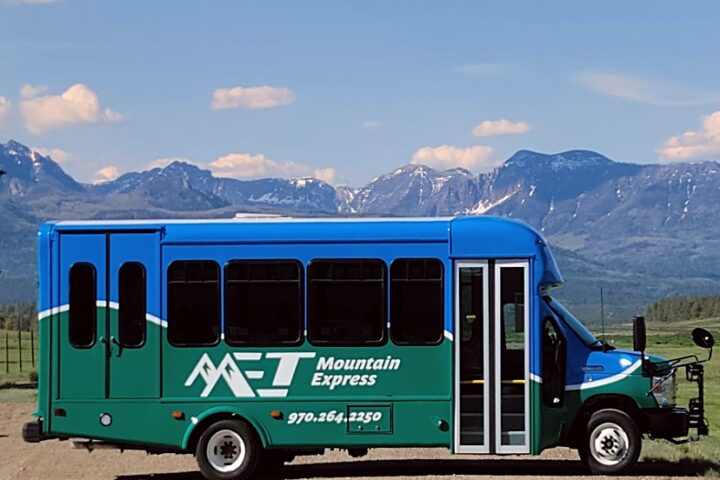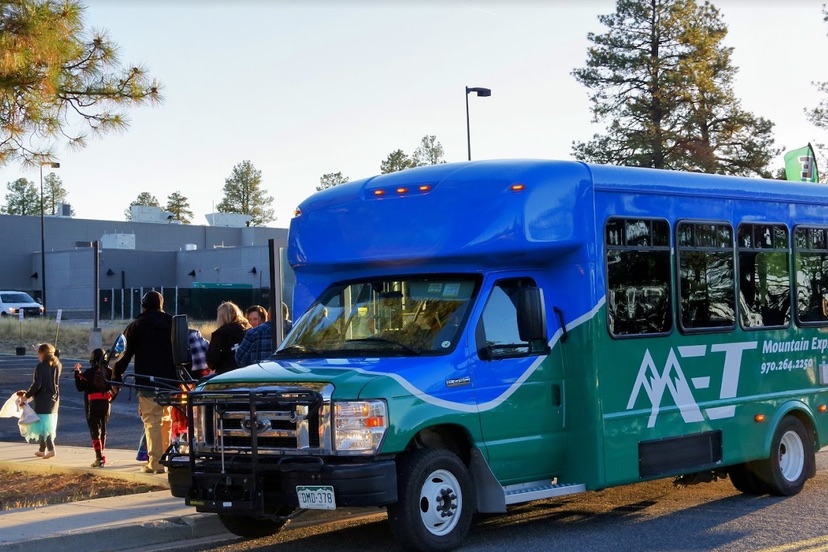In Parts One and Two, we heard that downtown Pagosa Springs is facing economic challenges over the next couple of years, while the Colorado Department of Transportation (CDOT) oversees the reconstruction of Highway 160 through the center of town, between S. 8th Street and N. 1st Street. The project will slow traffic while greatly reducing parking options.
That stretch of road runs past most of the commercial businesses in our downtown. During a joint meeting of the Archuleta Board of County Commissioners and the Pagosa Springs Town Council, a discussion focused on whether the County-run Mountain Express Transit (MET) might help mitigate the problems, perhaps by establishing some kind of ‘shuttle service’ to serve the downtown from a satellite parking area.
To cut down on traffic congestion.
But at this point, the vague idea to have the MET help solve a problem lacked an specifics. What exactly is the problem we’re trying to solve?
MET Director Kevin Bruce:
“I think you have questions to answer. What are peak periods? When are the most people on the road? When are we going to be effective? Is it going to be effective for us to run 8 hours a day? Where are the remote parking areas? You’ve got a ton of questions.
“Whenever I, as the Mountain Express, add a fixed route, I also have to add paratransport. So I can’t just say, I’m going to add a fixed route, because I also have to accommodate ADA…”
From the Americans with Disabilities Act:
Sec. 37.121 Requirement for comparable complementary paratransit service.
(a) Except as provided in paragraph (c) of this section, each public entity operating a fixed route system shall provide paratransit or other special service to individuals with disabilities that is comparable to the level of service provided to individuals without disabilities who use the fixed route system.
(b) To be deemed comparable to fixed route service, a complementary paratransit system shall meet the requirements of Sec. Sec. 37.123- 37.133 of this subpart. The requirement to comply with Sec. 37.131 may be modified in accordance with the provisions of this subpart relating to undue financial burden.
(c) Requirements for complementary paratransit do not apply to commuter bus, commuter rail, or intercity rail systems…
Kevin Bruce:
“So, during the week, I’m already providing that. But if we decide we want to do this [shuttle service] on a weekend, I just added paratransport to all of my hours that I’m running a fixed route. So it’s not as easy as saying, We want to do this. We’re staffed at three full-time positions, including myself, and five part-time drivers. So we absolutely would need additional staffing.
“The paratransport requirement is within 3/4 of a mile of the fixed route… I would also have to provide dispatching for paratransport for the weekend, so that’s an additional cost…
“So we have to know what we’re looking at. Are you just looking at trying to run down to Yamaguchi Park, to the parking area [next to the high school]? And these are all questions that I don’t have answers for…”
Commission Warren Brown:
“Well, Kevin, you were there [at the February 13 CDOT presentation] and you heard that. There will be no parking on Main Street for that period of time, likely. So we’re talking at least two years, to make this happen and have a plan to set in motion…”

I was also at the February 13 presentation, and understood that CDOT plans to keep two traffic lanes open throughout the two year project — one east and one west — but will not be allowing parking along most of Main Street (the local name for Highway 160 through downtown.)
Yesterday in Part Two, I briefly mention the changes to shopping and urban downtowns when the “shopping mall” arrived in America. Pagosa Springs never got a shopping mall. But we did finally get a ‘shopping center.’ And then, eight years ago, a Walmart.
And then… what happened to downtown?
I moved to Pagosa Springs in 1993, and at that time, most of the businesses along Main Street and Lewis Street served mainly local residents. As local leadership placed more and more stress on supporting a tourism economy, the downtown businesses gradually became more tourist oriented, especially when City Market opened in the new shopping center uptown, four miles to the west.
With the arrival of Walmart, the transition to gift shops and t-shirt shops and ‘antique shops’ continued. And then, marijuana shops. At this point in our history, the main ‘downtown draw’ for local residents are the downtown restaurants, and the hot springs.
That change to our downtown businesses — from serving locals to serving tourists — is part of the answer to the questions that have not yet been sufficiently formulated, about the MET.
Over the next two years, during the highway reconstruction, what is the chance local residents will drive downtown, park at a satellite parking lot, and wait for a shuttle bus, to visit a restaurant?
Over the next two years, what will be the impact on downtown motels and short-term rentals?
Over the next two years, will tourists want to shop in a construction zone?
As Mr. Bruce made clear, we have questions to answer. But we’re not yet sure what the questions are.
The Pagosa Springs Main Street Advisory Board ‘Cone Zone Care Team’ will reportedly hold an informational meeting about the highway reconstruction project on March 12 at the Riverwalk Inn.

